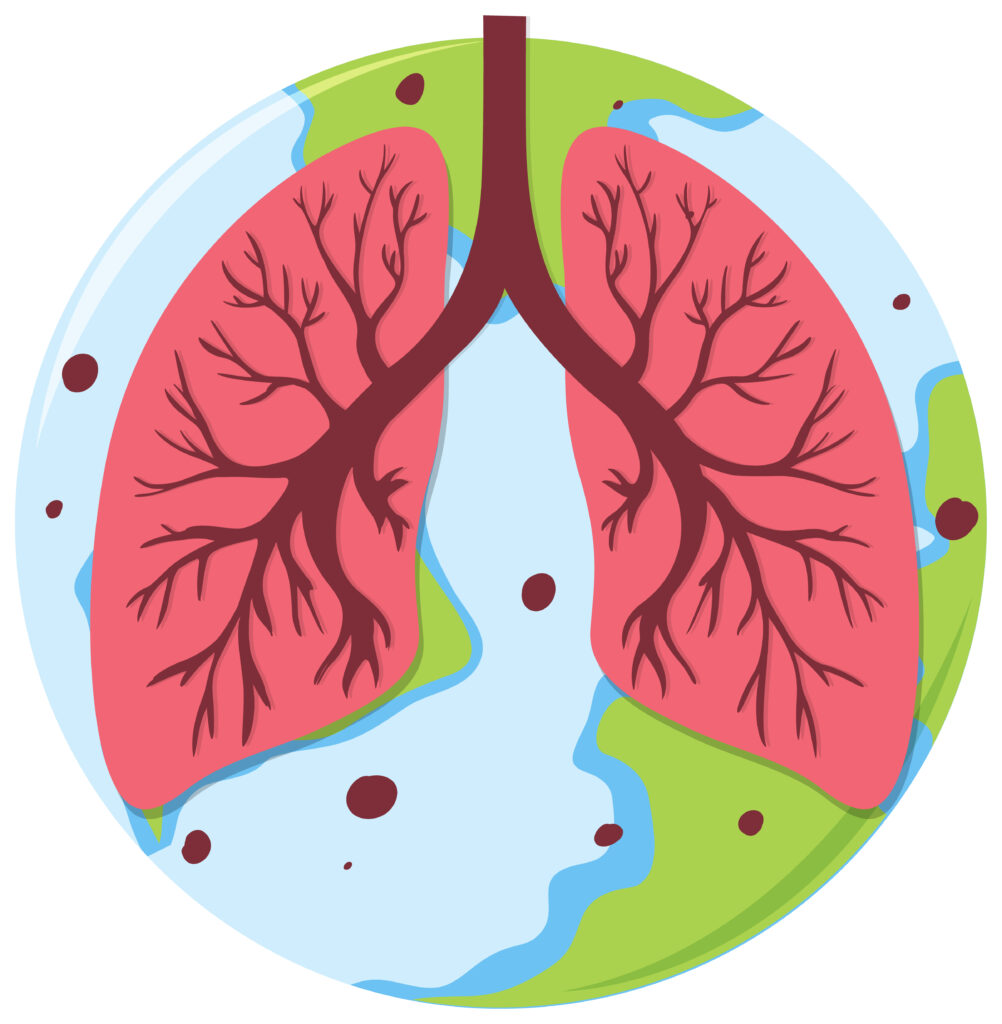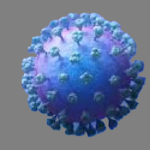Lung Cancer: An In-Depth Look at Severe Causes, Awareness and Treatment
Worldwide, lung cancer remains a major public health concern. As one of the top causes of cancer-related mortality, it affects millions of people of all ages, genders, and ethnicities. The difficulties surrounding lung cancer involve not just the disease itself, but also the (how money affects people’s lives) factors that add/give to its number, the advances in treatment (success plans/ways of reaching goals), and the extremely important
need for increased awareness. As per World Health Organization (WHO), it accounted for over 1.8 million deaths in 2020, underscoring its status as the leading cause of cancer-related deaths worldwide https://www.who.int/news-room/fact-sheets/detail/lung-cancer.
Socioeconomic and geographic factors have a significant impact on the incidence and mortality rates of lung cancer. As a result of robust awareness programs, smoking cessation initiatives, and early detection strategies in high-income countries, lung cancer rates are often lower. (looking at things in the opposite way), low- and middle-income countries face significant challenges, including limited access to healthcare, lack of (examining and testing so a decision can be made) programs, and higher rates of tobacco consumption, leading to increased (rates at which people die). In this comprehensive review, I will cover over the various types of lung cancer, its importance of awareness campaigns, Featuring some of the most modern treatment choices available around the world.
Understanding Lung Cancer
Lung cancer has been defined as an uncontrolled proliferation of living cells within the pulmonary tissue that causes cancers to form. Lung cancer can be split into two distinct categories:1.small-cell lung cancers (SCLC) and 2.nonsmall cell lung cancer (NSCLC).
About 85% of all occurrences of lung cancer are non-small-cell which typically grows and spreads more slowly than SCLC, which is renowned for its aggressive and quick growth.
Reasons Behind Lung Cancer
The cause (of a disease) of lung cancer is many-sided, with (more than two, but not a lot of) (things that make it more likely that someone will get a disease) involved (in crime) in its development.
1.Tobacco Smoke
The first (or most important) and most (done or used by many people) (something that makes it more likely that someone will get a disease) for lung cancer is smoking.
The World Health Organisation (WHO) estimates that smoking cigarettes is a contributing factor in about 85% of instances of lung cancer.
The harmful substances in tobacco smoke, including (cancer-causing things), not only cause changes in lung cells but also agreement (where everyone meets in the middle) the disease-fighting system‘s ability to fight off cancer growths/harmful things.
2.Environmental Exposure
The probability of developing lung tumours is increased by long-term exposure to gas called radon, asbestos fibres, and airborne pollutants. (lit), fabricating, and other industries can additionally demonstrate workers to occupational endangers, as an example chemicals .
3.Genetic Factors
Genetic predispositions strongly influence the likelihood of developing lung cancer. Individuals with a family history of lung cancer may be more vulnerable due to inherited genetic abnormalities that impair cell growth and repair systems.
4.Pre-existing Lung Conditions
In combination with smoking, chronic respiratory diseases, such as chronic obstructive pulmonary disease (COPD) and pulmonary fibrosis, can significantly increase lung cancer risk.
5.Lifestyle Choices
Factors such as a (sitting a lot) (way of living), poor diet, and too much alcohol consumption are related to an increased risk of different cancers, lung cancer included.
The Importance of Awareness
Lung cancer is frequently identified at a late stage because its symptoms can be minor and rapidly confused for those of other common respiratory diseases. It helps to increase knowledge about indicators of infection, diagnostic techniques, and warning symptoms.

Key Awareness Initiatives
1.Educational Campaigns
The American Lung Association and the Lung Cancer Research Foundation have undertaken initiatives to educate the public on the hazards associated with lung cancer, emphasising the importance of smoking cessation and lung health.
2.Screening Programs
High-risk populations have demonstrated lower mortality rates as a result of recent developments in low-dose computed tomography (LDCT) screening.
Awareness campaigns that encourage screening can help in early detection, which will improve the results of treatment.
3.Community Support
Resources and assistance for individuals impacted by lung cancer are largely provided by grassroots initiatives and neighbourhood support groups. By sharing personal tales and experiences, these organisations may distribute essential information and promote community among patients and their families.
4.Advocacy for Legislation
It is critical to advocate for legislation that reduce tobacco use, enhance air quality, and fund lung cancer research. Public opinion can influence changes in legislation, leading to more robust measures for public health and safety.
Advances in Treatment
During over the last few decades, there have been significant improvements in the search for an effective chemotherapy for lung cancer.
1.Surgery:
For initial stages lung cancer, amputation is still the main course of therapy. The standard surgical options can vary from wedge resection and lobectomy to pneumonectomy, depending on the size and location of the tumor.
2.Radiation Therapy:
When a patient may not be a good candidate for surgery or when the disease has spread, targeted radiation therapy is frequently used to reduce tumours or kill cancer cells.
3.Chemotherapy:
Cytotoxic medications are used in conventional chemotherapy to target and destroy cancer cells that divide quickly. Despite the fact that it has negative effects, it is nevertheless a key component of treatment for many lung cancer patients.
4.Targeted Therapies:
Targeted medicines that concentrate on particular genetic abnormalities in cancer cells have become possible because to recent advances in molecular biology. Personalised medicine has advanced significantly with drugs like crizotinib for ALK mutations and osimertinib for EGFR mutations.
5.Immunotherapy:
This novel method improves the body’s defences against cancerous cells.Compared to conventional therapy, immune checkpoint inhibitors, such pembrolizumab and nivolumab, provide patients with advanced lung cancer with new treatment alternatives that frequently result in longer survival rates.
Conclusion
The fight against lung cancer is a difficult one that calls for cooperation from patients, medical professionals, and legislators. While great advances have been achieved in the knowledge and treatment of lung cancer, increasing awareness, preventive measures, and equal access to care remain critical.
By enhancing education, promoting screening initiatives, and supporting research, there is hope for reducing the burden of this disease and improving outcomes for those affected by lung cancer.
As we continue to work collectively towards better lung cancer awareness and treatment, we must foster a culture of openness and support to encourage individuals to seek help, undergo screening, and finally, push for more all-encompassing laws to fight this widespread illness globally.
Suggestions for readers
Amazon.com
- JoycuFF Inspirational Morse Code Bracelets for Women Silver Beads Jewelry Encouragement Mantra Gifts for Her
- Cancer Care Gifts for women,Natural Stone Healing Crystal Bracelets Encouragement Gifts for Women Man Girls Best Friend Sister
- Happy Kisses Cancer Awareness Bracelet – Ribbon, “Funk Cancer” & I Am Survivor – Gift for Women and Men
- HAPPYPOP Breast Cancer Awareness Inspirational Nurse Off Duty Surgery Recovery Gifts, Chemo Survivor Cancer Socks
Amazon. in
- Hidden Hollow Beads Cancer Awareness Charm Key Chain Ring, Women’s Purse or Necklace Charm, Comes in a Gift Box
- Hidden Hollow Beads Cancer Awareness Stretchy Bracelet.925 Sterling Silver, Strong Stretch Cord Fits Most Wrists
- Hidden Hollow Beads Cancer awareness beaded keychain, 5 inches long, hooks to anything. Can carry multiple keys
- ClikNest Stretchy Pagri Pagree Turban Cap Chemo Head Wraps Cancer Headwear Bennie Twisted India’s Hat for Men Women Polyester










